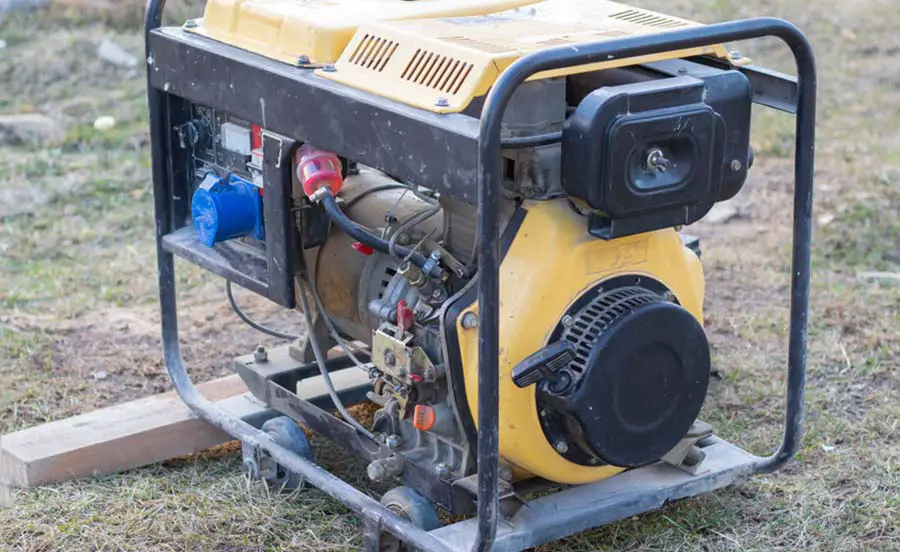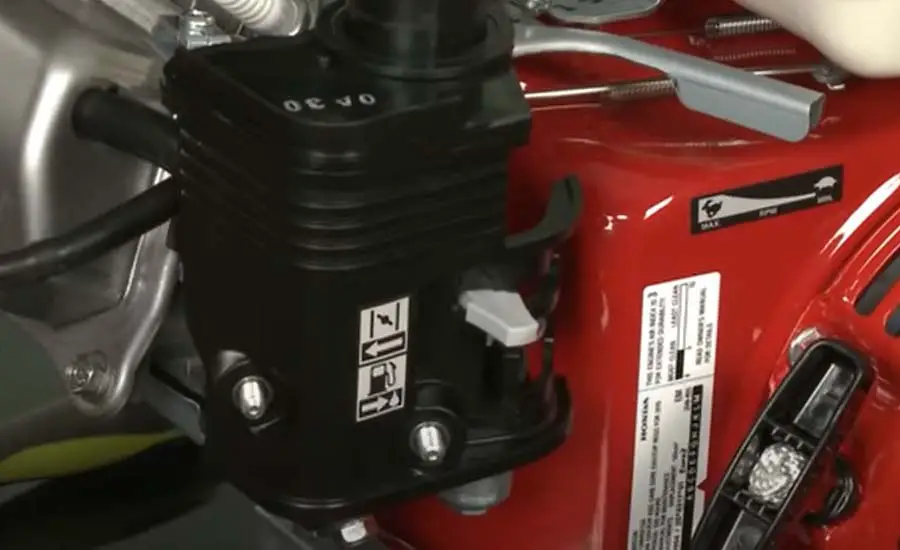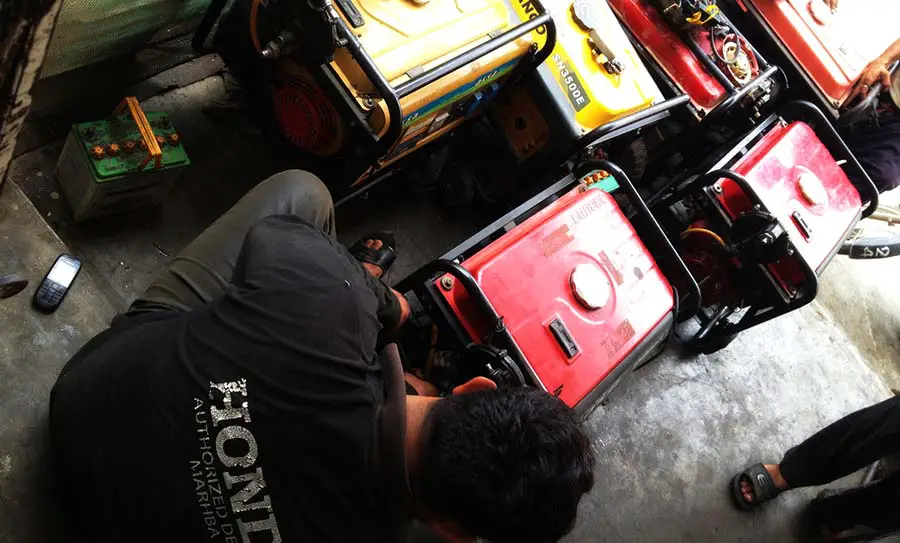
Sometimes you don’t care what it takes to get your generator started, and you just want your lights to come back on. One of the steps you might take is to only run the generator with its choke on because when you open the choke, the generator dies for some reason. So, why might that be? What role does a choke play in running a generator, and what happens when you run your generator with the choke open?
You use the choke on a generator to limit the air mixture in your fuel to get the machine started. By limiting the amount of air in the engine, more fuel goes to the pistons. Running a generator with the choke open can cause a vacuum leak and make the generator burn more fuel.
So, a choke is required to start the engine, but what does it mean if you use it to keep your generator running? What can cause your generator only to run when the choke is on, and how do you fix this problem? We will address all of these questions and more.
Two Things You Need To Know About Running Generators On Choke
When you run your generator, the choke is the component that helps your generator start. Typically, your generator requires a balanced mixture of air and gas to start running, but your engine might need additional fuel to start running if it is cold. This is where the choke comes in.
The choke’s function is to restrict the air that flows into the engine (choke the air supply of the generator) so that the mixture of gases and fluids that go into your cylinders is more fuel than air.
Once the temperature of your generator has reached acceptable levels, you must turn off the choke, or else the engine can run a bit more ‘rough’ (meaning the fuel can clog the carburetor, causing it to struggle to consume more gas).
Below are two critical points on running your generator on choke; the first one being the cause, the other one being the consequence.
1. Your Generator Might Have a Vacuum Leak
If your generator’s engine can only start with the choke fully on, you may have a vacuum leak in your engine, which causes the engine to run too ‘lean’ (too much air).
2. Your Generator Will Consume Fuel at a Faster Rate
Since the idea of the choke is to limit the amount of air mixed with your fuel, you will have a higher concentration of fuel (or, in other words, you will have a ‘richer mixture’), which means that your generator will consume more fuel.
This is because the same volume of compounds must still go into each piston, but a higher percentage of that volume is now the fuel that burns in each piston. This means you will have to replenish fuel at a faster rate. This will have cost implications for your generator usage.
As we can see, there is hardly any long-term damage that can occur due to running your generator on choke. Rather, if you have to run your generator on choke, you most likely have a problem that existed before you started running your generator on full/half choke. At any rate, the damage you feel when running your generator on choke the whole time will most likely be on your wallet!
How To Fix Your Generator If It Can Only Run On Full or Half Choke

Generators use chokes to help them start, especially in cold weather, but you’re not supposed to run your generator with the choke open. If you find that you can only run your generator while its choke is entirely or half-open, there are a couple of reasons for that and a couple of solutions.
Below are some solutions to fixing your generator and get it back to running normally.
Stale Fuel Inside Your Generator
Sometimes, stale fuel inside your generator can stall your generator when you open the choke. Thus, this will force you to always run the engine on full choke or half choke for as long as this fuel remains stale.
How do we go about fixing this? The answer is simple. Ask yourself when last the fuel was treated and had a stabilizer added to it. If you did not treat your fuel or add a stabilizer to it within the past three months, the gas has gone stale and is no longer as effective as it once was.
This means that your engine will stall every time you open the choke because you are adding air to fuel that is already too lean. If you have not treated your fuel, follow the steps below:
- Drain out the old gas. First, make sure you turn off the valve.
- Open the carburetors drain screw (if it has one). Place something underneath to catch any gas that might spill or leak.
- Disconnect the fuel line from the carburetor and place it in an empty gas container. You can use a funnel to do this. You might need pliers for this step.
- Turn the fuel valve on and wait for the tank to empty.
If you had untreated fuel in your tank for a long time, it would turn to varnish once it oxidizes. This varnish, unfortunately, has likely formed in the generator’s carburetor as well. Instructions for fixing this issue are next.
Your Clogged Carburetor Is Causing the Generator to Stall

Stale fuel inside your generator can sometimes form varnish. If the fuel develops varnish, the varnish is probably clogging the carburetor’s main jet. This means that gasoline cannot mix with air before it goes to the intake. If there is not enough fuel to mix with air, your generator will not start and run, or you will have to use the choke to keep it running.
To fix this, you need to make sure that you clean out all the varnish from the main jet. Here are the steps:
- Shut off your fuel valve.
- Open the drain screw if your carburetor has one to let any remaining fuel drain.
- Remove the main nut at the bottom of the carburetor bowl and remove the bowl.
- Remove the main jet. Make sure you use an appropriately sized screw.
- Now, use a wire brush or something very small and clear out the hole of the main jet.
Now you can reassemble what you have taken apart. If your generator is still not working correctly, it might be because of the pilot jet.
Your Pilot Jet Is Not Clean and Causes Stalling Without a Choke
After the gas passes through the main jet, it goes to the idle circuit, where the pilot jet ensures that gas passes through the air and mixes with it. This happens while an engine is busy idling, regardless of whether you run it on full, half, or no choke.
This is roughly the same situation that applies to the main jet. If any particles or buildup obstructs fuel from passing through to mix with air, your gas will be too lean, and you will have to put the choke on half or full.
To fix this, make sure that the pilot jet is perfectly clean and does not obstruct the fuel flow.
Your Carburetor Sucks In Too Much Air
If the gaskets on the sides of your carburetor are damaged or if your carburetor is loose, it can cause the carburetor to suck in too much air, making your gas too lean, and forcing you to use the choke to keep your generator running.
Make sure the gasket on either side of the carburetor is fine and fixed tightly against the intake.
Conclusion
In conclusion, if you have to use your choke on the generator while running, you will spend a bit more money on gasoline than what you previously spent. As we’ve seen, there is probably something wrong with your generator.
Make sure that all the necessary parts are clean and that nothing obstructs fuel from being able to mix with air – otherwise, your choke will have to limit the air to find the perfect balance again. If nothing blocks fuel injection, you are going to have to take your generator to a professional.

